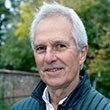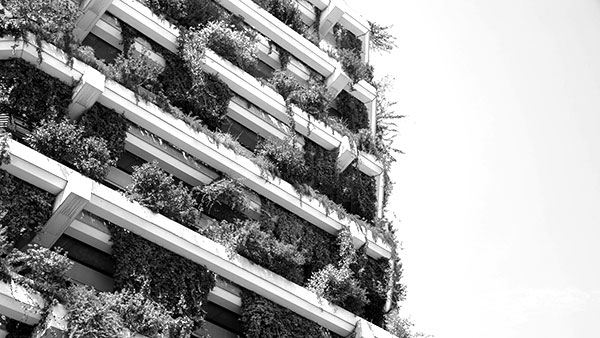The RSA Thame Group has led the development of a 10-year green living plan aimed at protecting and enhancing the quality of life for local people. Charles Boundy FRSA charts the journey towards securing a cleaner, greener and healthier community
Following my retirement from working in central London, my wife and I decided to start a new life. In 2012 we moved to Thame, an attractive market town – population now about 14,000 – southeast of Oxford, and set about adapting to our new home and locality.
Having been a largely passive RSA Fellow for some years, I attended an RSA branch meeting in Oxford. After an hour of discussion about Oxford I spoke up and mentioned Thame, at which point several heads turned round to seek me out. The RSA Thame Group was really born in that moment, and has grown since into a broader steering group called Thame Green Living. It is now some seven years and three town clerks later. So what has been achieved, what is happening now and where are we headed?
This July, after public consultations, research, detailed deliberations with the Town Hall team, and extensive drafting and re-drafting, our Green Living Plan for Thame was unanimously approved by the town councillors. Careful preparation had paid off! It was one of those slightly surreal Zoom meetings where the four of us presenting the plan could just see the councillors in gallery view, but were hardly able to judge their expressions. And we could be seen by, but not ourselves see, the 50 or more silent public spectators.
Council funding enabled the plan to be brought to life by a bright young graphic designer, and the result is magical. The plan was launched in early October outside the town hall and with a blitz across the council’s newsletter, our accumulated email base and our Facebook and Instagram pages, several thousand people connected through social media or our redesigned website.
There may be just 16 items on the current projects list but the full plan contains 180 recommended actions. These are broken down into three main sections: individual actions, community activities and ‘infrastructure projects’. The first group highlights how every individual can help redress the decline of our natural world, needless waste and the use of fossil fuels that pollute our air and climate. These are steps that anyone can take – here and now – so there is no reason for people to say they don’t know what to do. Our website provides more information about the plan and allows people to pledge action and/or give feedback.
With the second group, community activities, we can help with project planning, contacts, potential volunteers and perhaps even some expertise. Already the council has agreed to open up some currently closed routes and green spaces and we are involved with tree-planting schemes and have encouraged one developer to create a biodiversity-friendly planting scheme on their land. On the energy side, and to reduce pollution, we are pioneering work to encourage electric vehicles and the installation of suitable chargers. We have also just launched a scheme for local residents to invest in roof solar panels at discounted bulk rates with a contribution back to the community.
Infrastructure projects tend to be longer-burn. Anything involving roads and traffic, even cycleways, takes time and is at risk of the vagaries of district and county council policies and budgets. This is why it is called a 10-year plan (2020-2030) but with the emphasis on planning ahead now.
The need to build involvement to help convince cash-strapped and cautious local authorities to support our ideas is leading us towards establishing a formal community organisation with a wide membership base of individuals and groups. In the process we are developing active links with schools, family centres, conservation volunteers, churches, other community groups plus enthusiasts in Thame’s surrounding villages.
Our Green Living Plan is geared to securing a cleaner, greener and healthier community than would otherwise be the case. We are not setting out to block development as such; whatever we think of current and proposed planning laws! Rather we seek to make the longer-term connections now before being submerged in the effects of short-term need. This focus on connections means we are systematic and is a major distinguishing feature of our plan. It emphasises: green spaces for sanity and carbon capture; safe and joined-up cycling and walking routes for fresh air and exercise; real biodiversity corridors for all the indispensable creatures of our shrinking natural world; a radical reappraisal of our waste through reduction, re-use and recycling; and a wholesale cleaning up of our air by changing our home and travel habits.
It is clear that many people want to support these ideas, but do not always know how to do so. Our plan provides the why and the how, and the more who pick up green living principles the stronger and healthier we will all be. We hope other communities will be inspired to follow our lead and make green living spring into action across the country and beyond! Who will join us? If you want to find out more, please contact me via charles@thamegreenliving.com.
Charles worked as a solicitor for 40 years, starting his own legal practice, now merged with Fladgate LLP, where he has been a corporate and managing partner. He was Group Legal Director of what was the Random House Group between 2004 to 2010 and has written three books on business contracts. He founded the RSA Thame Group in 2013.
Related articles
-
Sustainability is no longer enough
Comment
Rob Hayles FRSA
Rob Hayles FRSA on how to move from sustainable to regenerative goals.
-
Plastic waste in the pandemic
Comment
Dr Grace Hatton FRSA
Dr Grace Hatton FRSA on her experiences in healthcare and why more needs to be done about plastic waste
-
Cleaning up fast fashion
Comment
Kieran Breen
What are the consequences of our appetite for low-cost clothing?




Be the first to write a comment
Comments
Please login to post a comment or reply
Don't have an account? Click here to register.